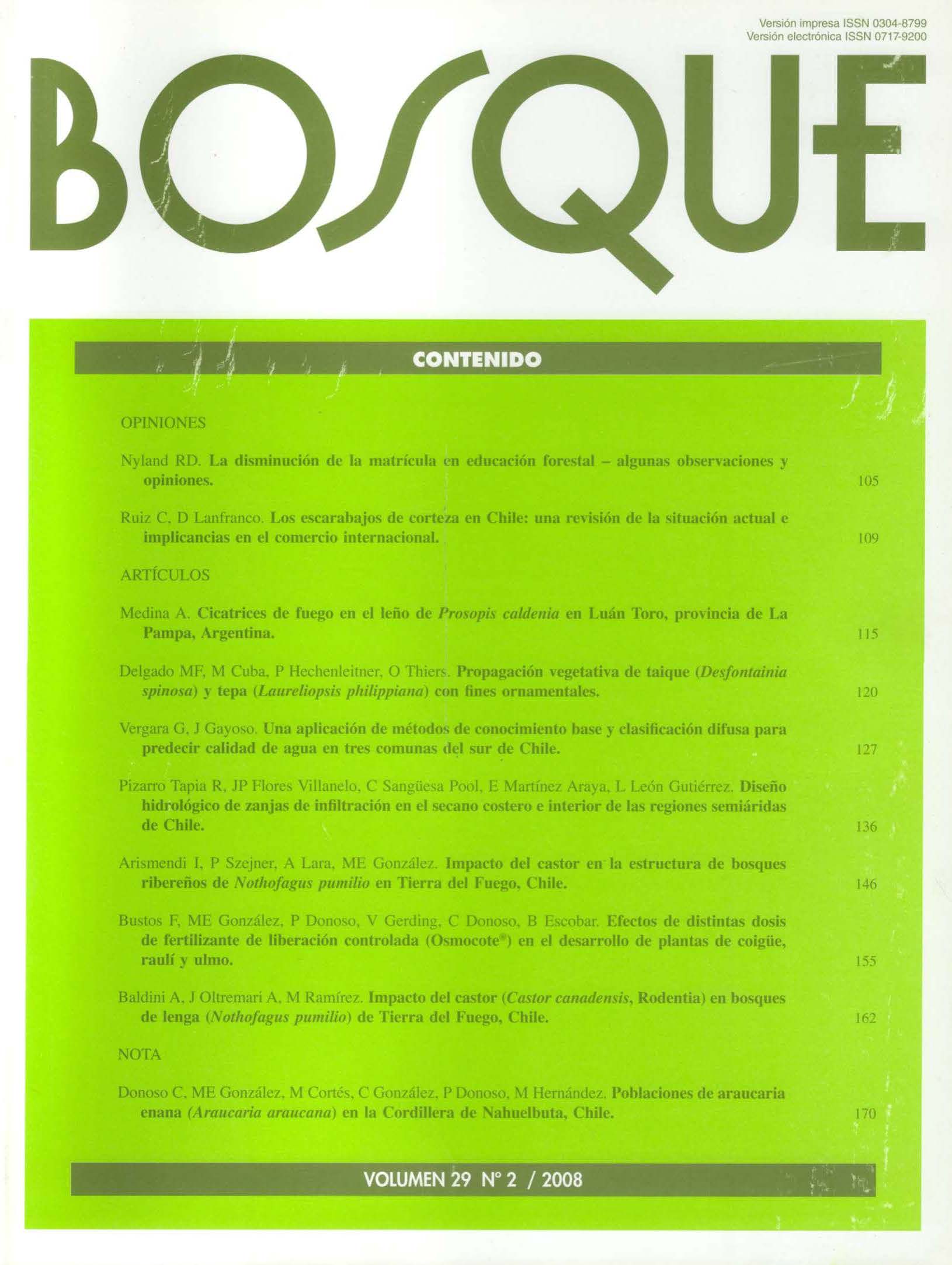Main Article Content
Aug 29, 2008
Abstract
This study was carried out with the goal of determining the effects of different doses of slow-release fertilizer (Osmocote®) in the development of aerial and root biomass of the native species Nothofagus dombeyi, Nothofagus nervosa, and Eucryphia cordifolia. Seedlings were raised in containers of 130 cm3 filled with discomposed bark of Pinus radiata calibrated to particles ≤ 10 mm. This substrate was mixed with three doses of Osmocote® (18N-6P-12K): 2.5 kg m–3 (low), 5.0 kg/m3 (medium) and 7.5 kg m–3 (high). The experimental design used was a complete random block with three replications. The variables analyzed were the diameter at the root-collar, total height, and aerial (dry weight of leaves and stems) and root (dry weight of fine and thick roots) biomass. Seedlings of N. nervosa achieved greater dry biomass than the two other species for all three doses. Nothofagus dombeyi and E. cordifolia seedlings yielded the greatest increments in growth and biomass with the higher fertilizer doses (7.5 kg/m3), but in the case of N. nervosa dry weight of leaves and dry weight of stems were greater with the medium doses. Nothofagus nervosa and E. cordifolia showed a greater response in biomass than N. dombeyi with lower nutritional doses. Nothofagus dombeyi and E. cordifolia reached a better balance between the aerial and root system, and between fine and coarse roots, than N. nervosa. These findings suggest the need of considering other nursery cultural management activities in order to achieve more balanced plants that should perform better in the field.


